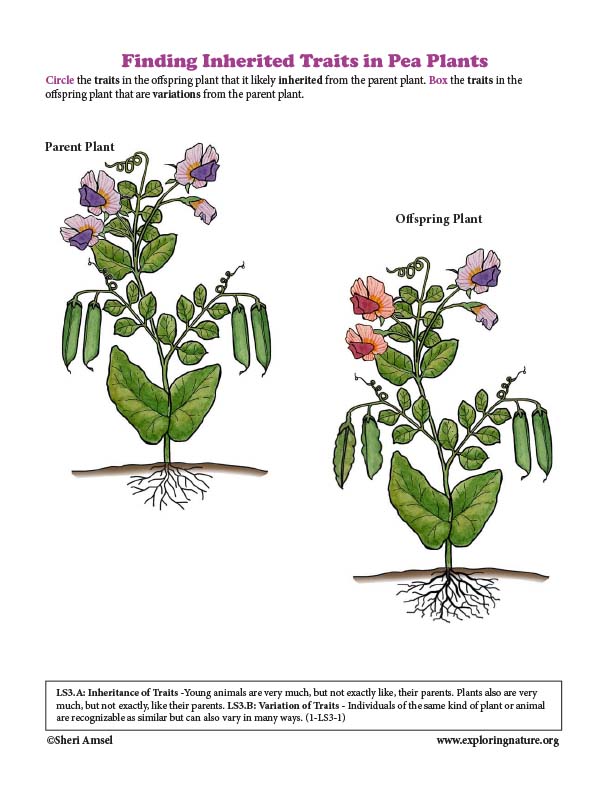

Disciplinary Core Ideas
LS3.A: Inheritance of Traits
• Young animals are very much, but not exactly like, their parents. Plants also are very much, but not exactly, like their parents. (1-LS3-1)
LS3.B: Variation of Traits
• Individuals of the same kind of plant or animal are recognizable as similar but can also vary in many ways. (1-LS3-1)
Science and Engineering Practices
Constructing Explanations and Designing Solutions
Constructing explanations and designing solutions in K–2 builds on prior experiences and progresses to the use of evidence and ideas in constructing evidence-based accounts of natural phenomena and designing solutions.
• Make observations (firsthand or from media) to construct an evidence-based account for natural phenomena. (1-LS3-1)
Crosscutting Concepts
Patterns
• Patterns in the natural and human designed world can be observed, used to describe phenomena, and used as evidence. (1-LS3-1)
Performance Expectations - Students who demonstrate understanding can:
1-LS3-1. Make observations to construct an evidence-based account that young plants and animals are like, but not exactly like, their parents. [Clarification Statement: Examples of patterns could include features plants or animals share. Examples of observations could include leaves from the same kind of plant are the same shape but can differ in size; and, a particular breed of dog looks like its parents but is not exactly the same.] [Assessment Boundary: Assessment does not include inheritance or animals that undergo metamorphosis or hybrids.]
When you research information you must cite the reference. Citing for websites is different from citing from books, magazines and periodicals. The style of citing shown here is from the MLA Style Citations (Modern Language Association).
When citing a WEBSITE the general format is as follows.
Author Last Name, First Name(s). "Title: Subtitle of Part of Web Page, if appropriate." Title: Subtitle: Section of Page if appropriate. Sponsoring/Publishing Agency, If Given. Additional significant descriptive information. Date of Electronic Publication or other Date, such as Last Updated. Day Month Year of access < URL >.
Amsel, Sheri. "Finding Inherited Traits in Pea Plants (Grade 1)" Exploring Nature Educational Resource ©2005-2024. December 14, 2024
< http://www.exploringnature.org/db/view/Finding-Inherited-Traits-in-Pea-Plants-Grade-1 >
